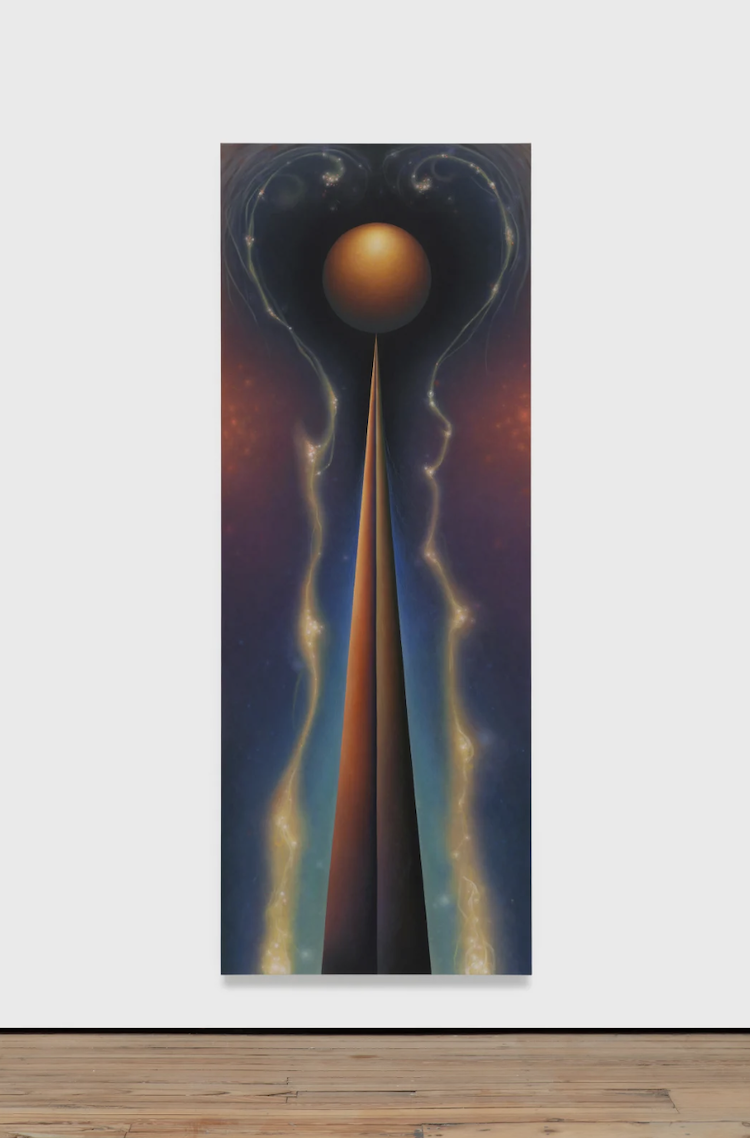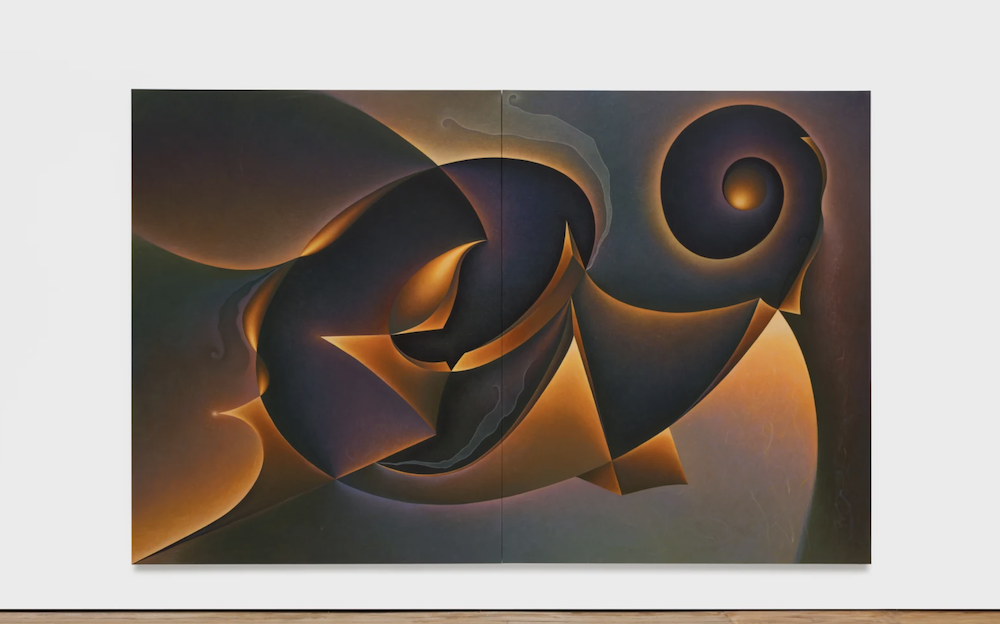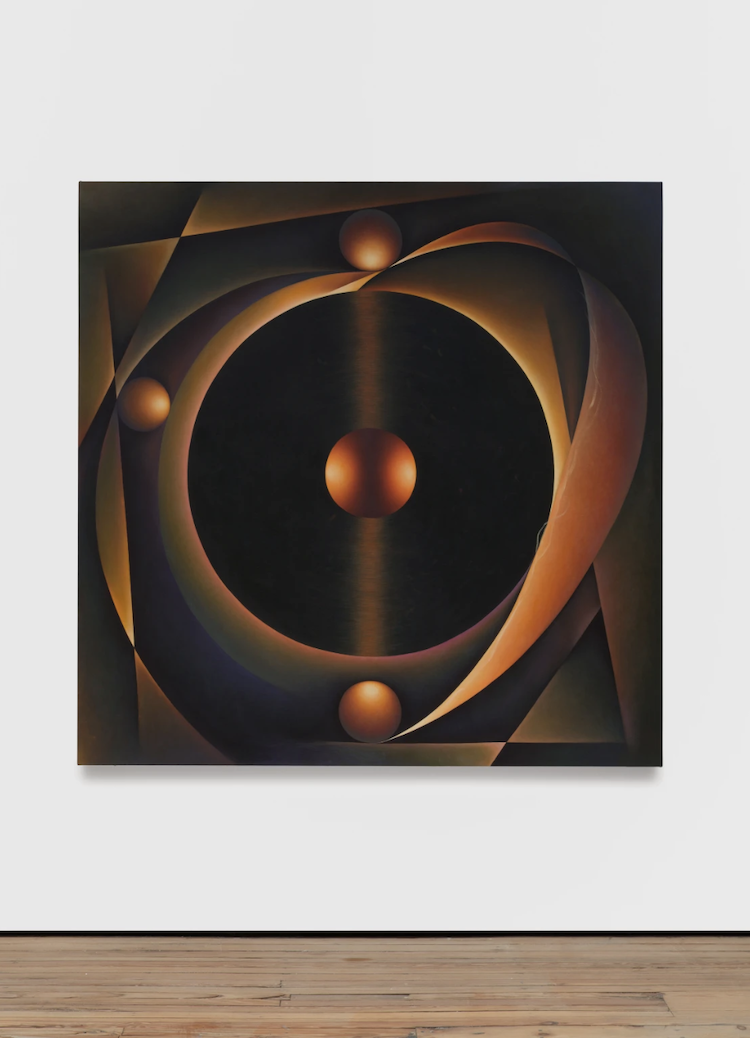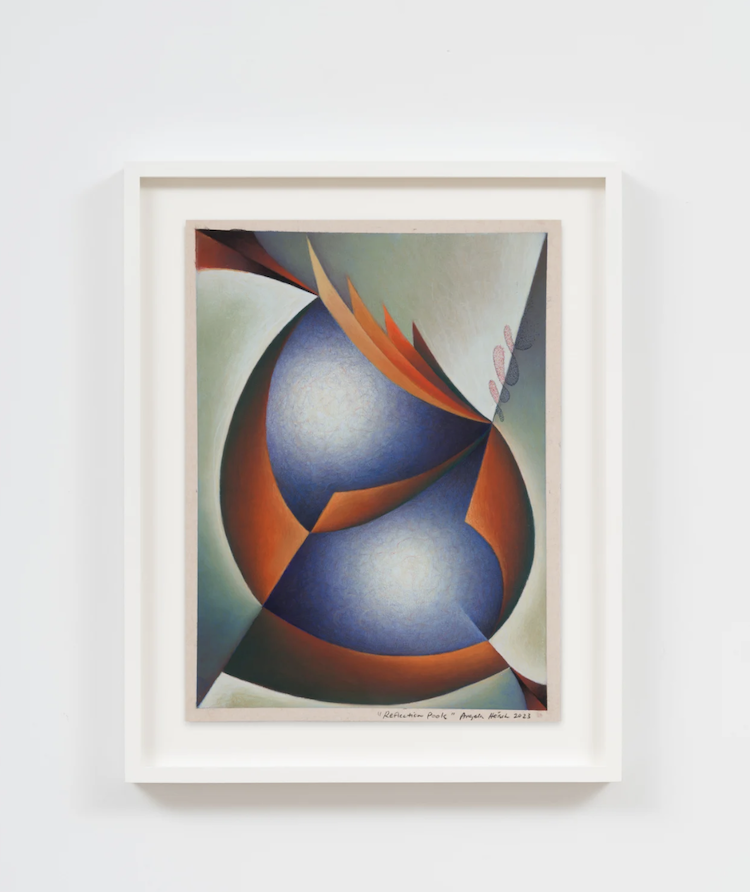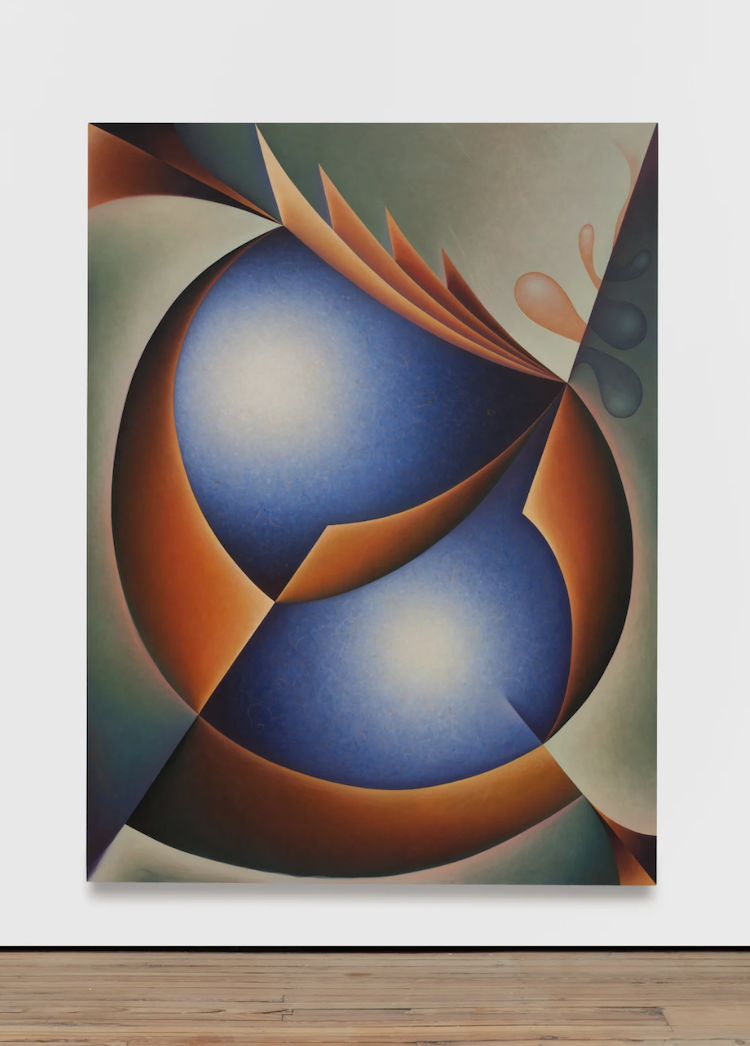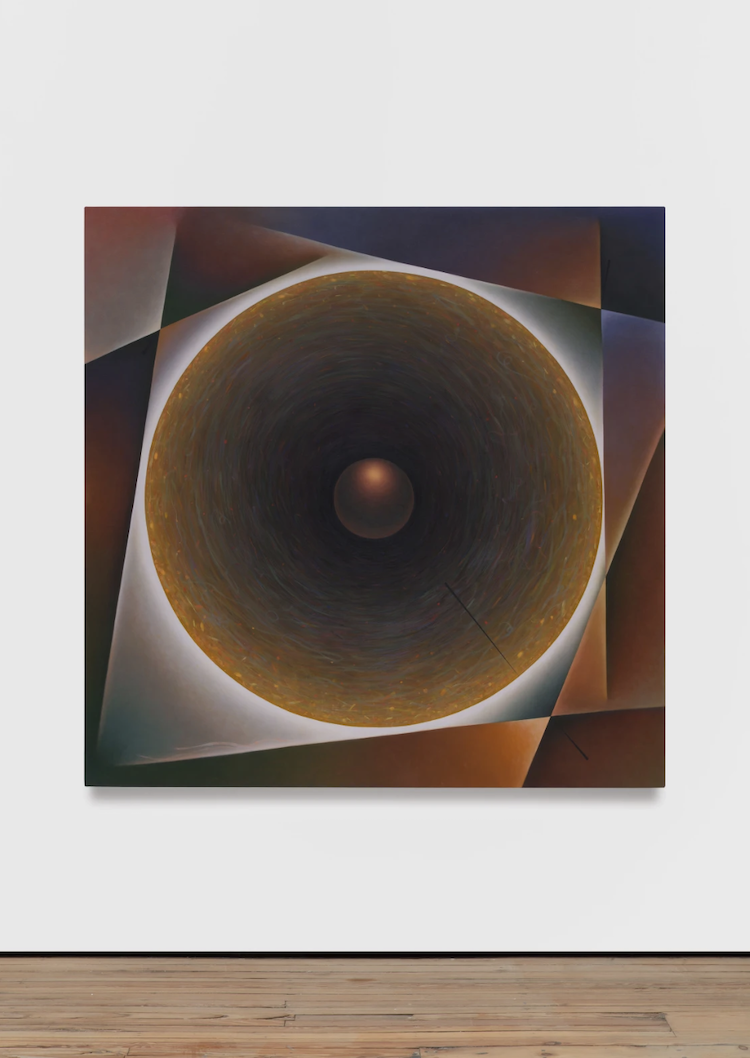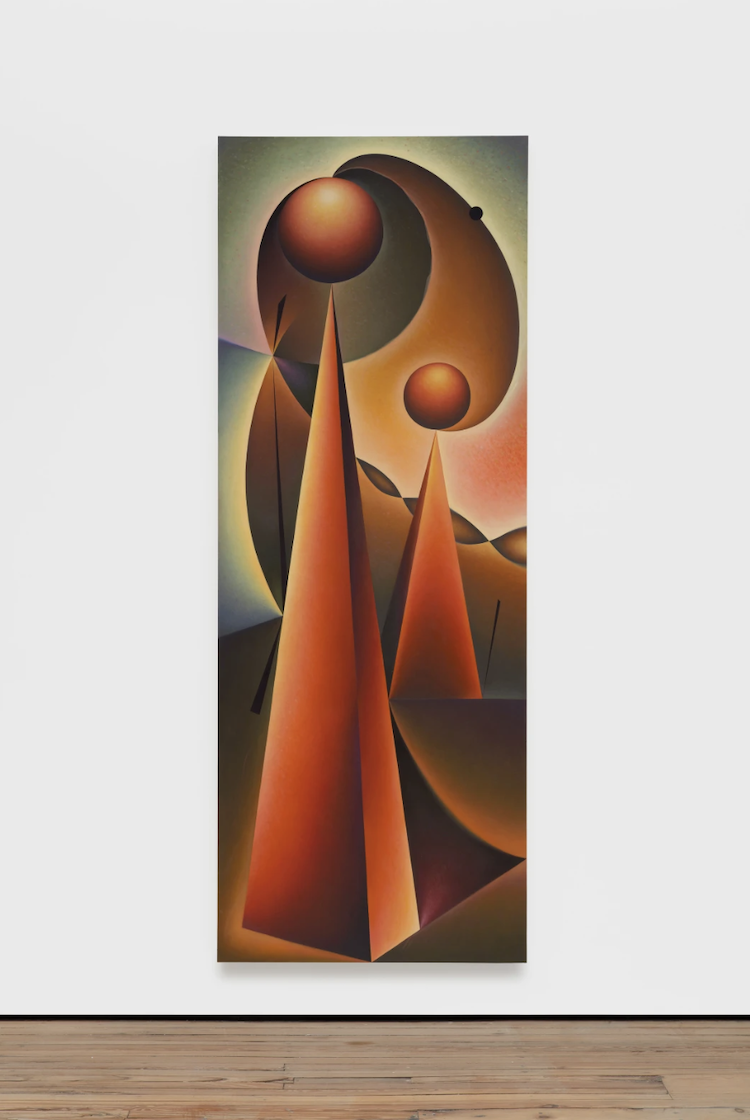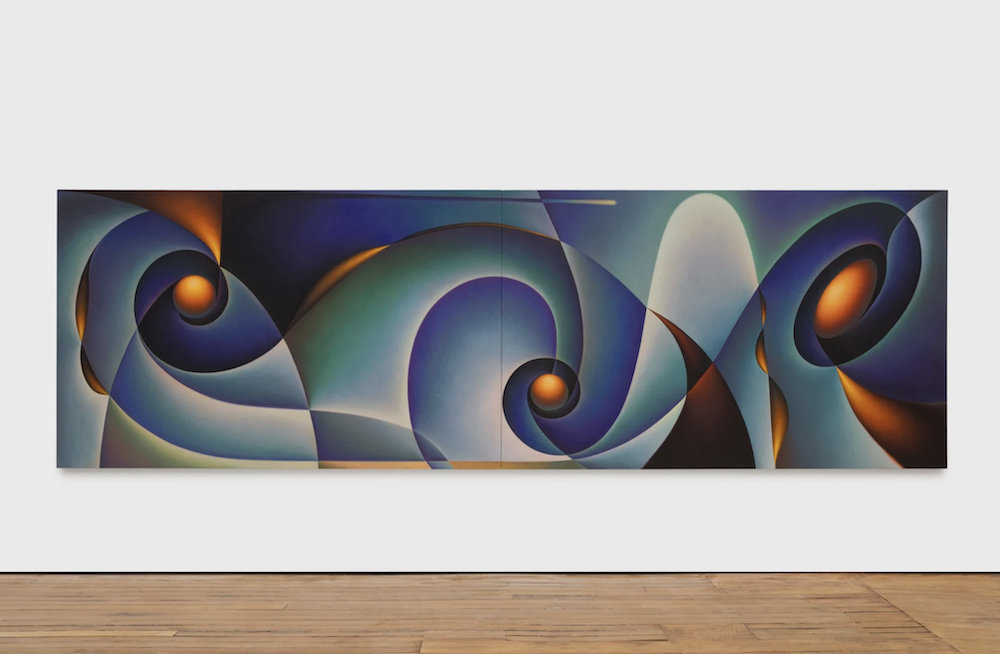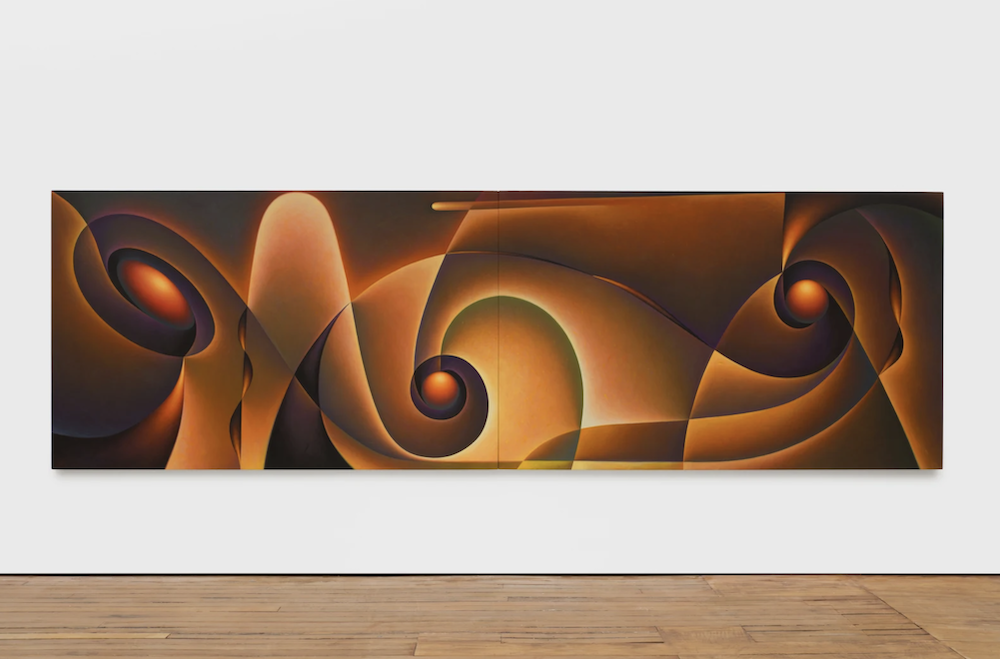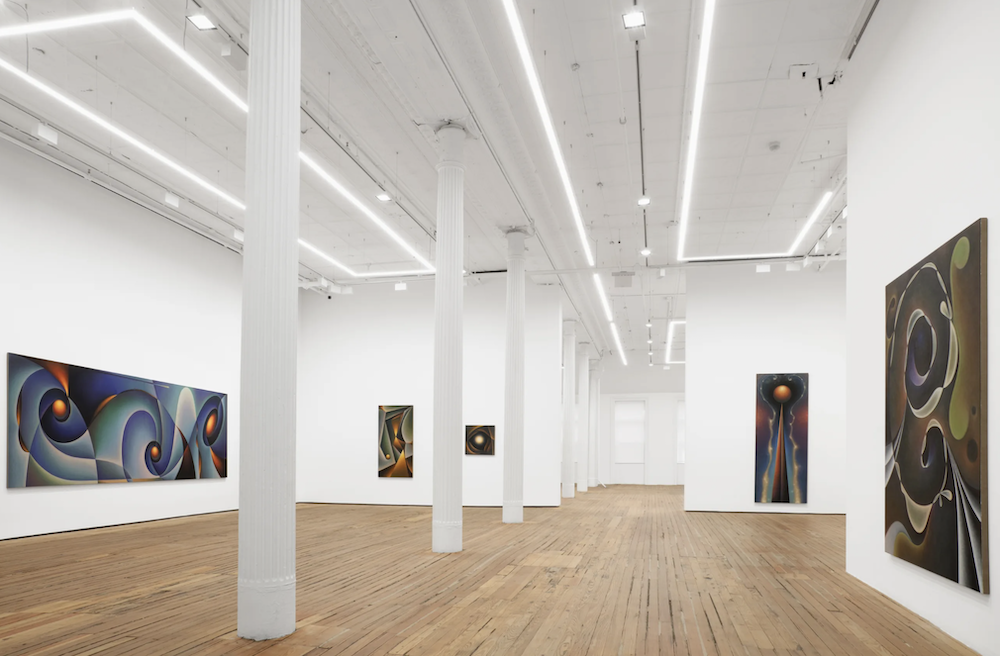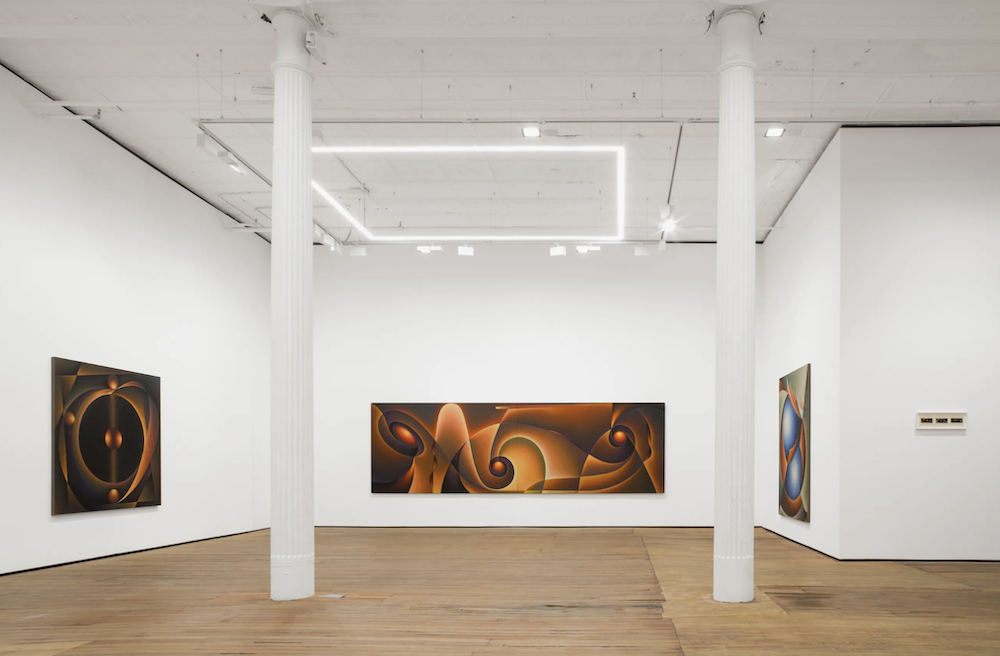GRIMM is pleased to present As above, so below, an exhibition of new paintings and works on paper by Angela Heisch on view through October 14, 2023. This is the artist’s second solo show at GRIMM and the first at the New York gallery. A catalogue with a new essay by Cassie Packard will be published on the occasion of this exhibition.
Building upon interests in natural patterns and elemental forces, Angela Heisch’s recent abstractions encapsulate a celestial expansiveness and a harmonious order through the use of a luminous, baroque color palette with swift, fluid movement or, alternatively, a dense stillness. This is the largest exhibition of Heisch’s work to date, allowing the artist to work on a grander scale to explore motion and landscape in unprecedented fashion.
Several new works on view employ an architectural language and hard-edged, mechanical style to reference cityscapes and manufactured developments of the organic world. As such, Heisch aims to highlight the connectivity and mirrored relationship between nature and the manmade. Such dichotomies are at the root of Heisch’s practice, as referenced by the exhibition title As above, so below: hard and soft, fast and slow, light and dark. The paintings in the exhibition each have a counterpart, or a “response painting,” a process that has allowed the artist to examine each work through a divergent lens: meditating on alternative environments, materials, and time. This creates a brief and discreet narrative and relationship between the paintings which otherwise prompt the viewer to create meaning through their own projections.
The paintings on view are complemented by a chapel of the artist’s pastel works on paper in the lower-level gallery, underscoring the various thematic binaries explored in the exhibition. Each of Heisch’s paintings are born out of the immediacy of a corresponding pastel work. Both the paintings and works on paper are created through heavy, repeated layering of their respective medium, though the subdued hues of pastel allow each layer to be visible. This discernible history of the work’s creation is akin to a living, organic form. Though the paintings have a direct relationship to the works on paper, they also resonate asymmetrically from each other, offering a tonal and aesthetic separateness to “the above” and “the below” in the exhibition.



